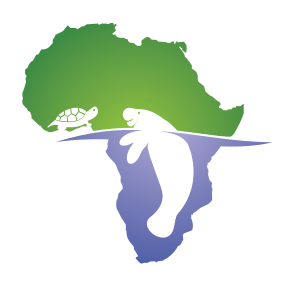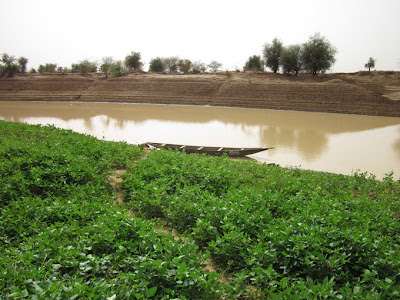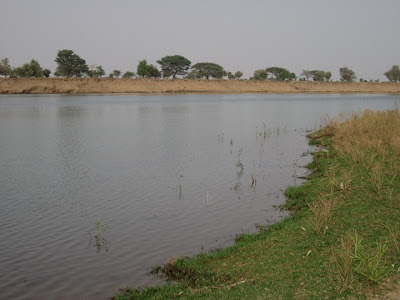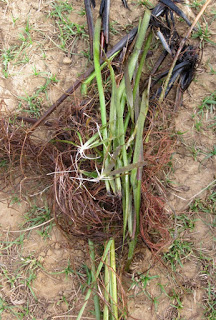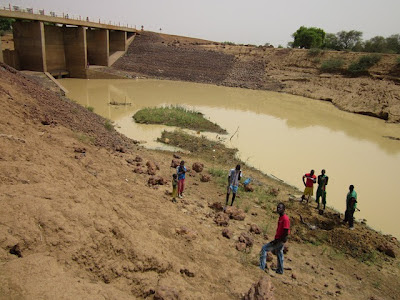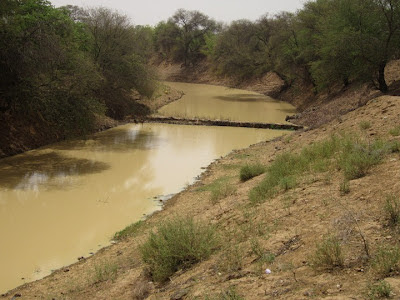Yesterday afternoon we walked along part of the Navel tributary to see if we could spot the live manatee that had been reported there, but we didn’t see it. We met up with the same farmer I met the day before, but he hadn’t seen the manatee again. The foreground of this photo is the farmed area, but the plants don’t extend all the way to the waterline, so they aren’t available to any trapped manatees.
After our hot walk we stopped by our friend Commandante Seck’s house to say hi and drink some cold water. After sitting in the shade for awhile, he suggested we walk down to the Senegal River to go for a swim. A few of his kids joined us and we walked down to the river where I walked along the edge looking at plants while the others dove in. (The opposite shore in the photo below is Mauritania).
Aside from the usual grasses along the water’s edge I noticed a few aquatic plants in the water, and was very surprised to find some Crinum natans! This is the first time I’ve found this plant in the Senegal River. I collected samples of all the plants I could find and pressed them in my plant press. It’s not hard to get samples to dry in this heat!
This morning we met up with the chief of the local Water and Forestry office, as well as the head of the Fisheries Dept., and went to the location of the second manatee carcass we had heard about. This one was found dead in February at the dam, and I assumed that it had died trapped above the dam in the tributary. However, when we got to the site, it turned out it had been found below the dam. Unfortunately the locals built a second samaller dam below the main dam, to slow the water coming out of the main dam, and this unfortunate manatee got trapped between the two. Apparently it was seen while it was still alive, but by the time they went to rescue it several days later, it had died. In the photo below the guys are standing around the manatee’s burial pit- I’ll spare you photos of the extremely rotten carcass.
This photo is just to the right of the photo above, and shows the second smaller dam that kept the manatee from being able to continue back out to the Senegal River.
I was able to collect an ear bone for age determination and a genetics sample, but not much else. The Fisheries Dept. plans to clean the skeleton and assemble it for an educational display once it’s finished decomposing.
Tomorrow we begin our return trip towards Dakar, but we plan to make a few more stops along the way. Tomorrow we’ll head off into some truly remote desert to follow two branches of the Senegal River to the locations where the 2 male manatees we tagged in 2009 spent time. Although we could see their locations from the satellite tag data, we want to investigate the habitat firsthand, to try to understand why they chose to spend 4 months in these locations. Then we return to eastern Lac de Guiers to look for manatees there.

